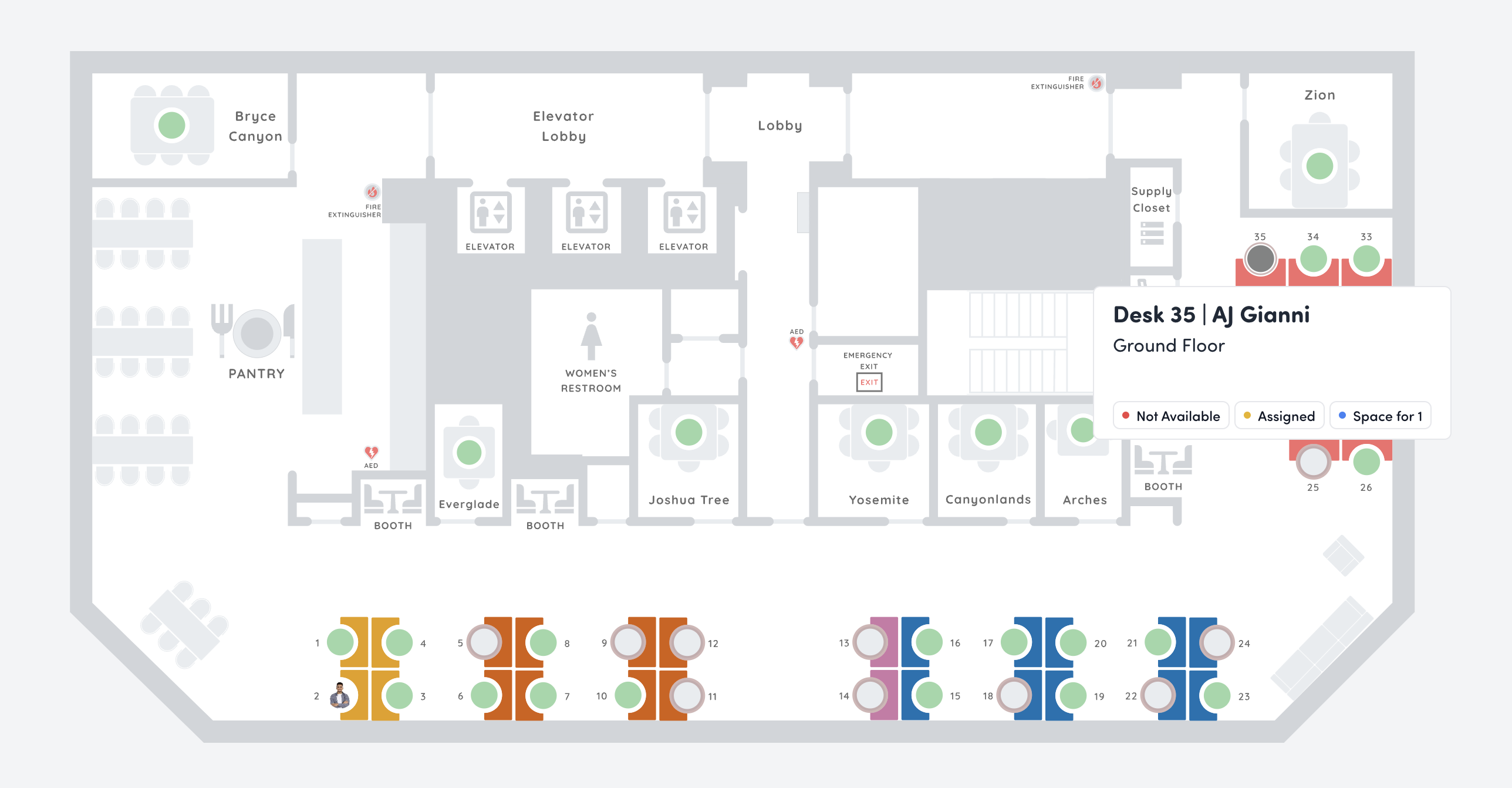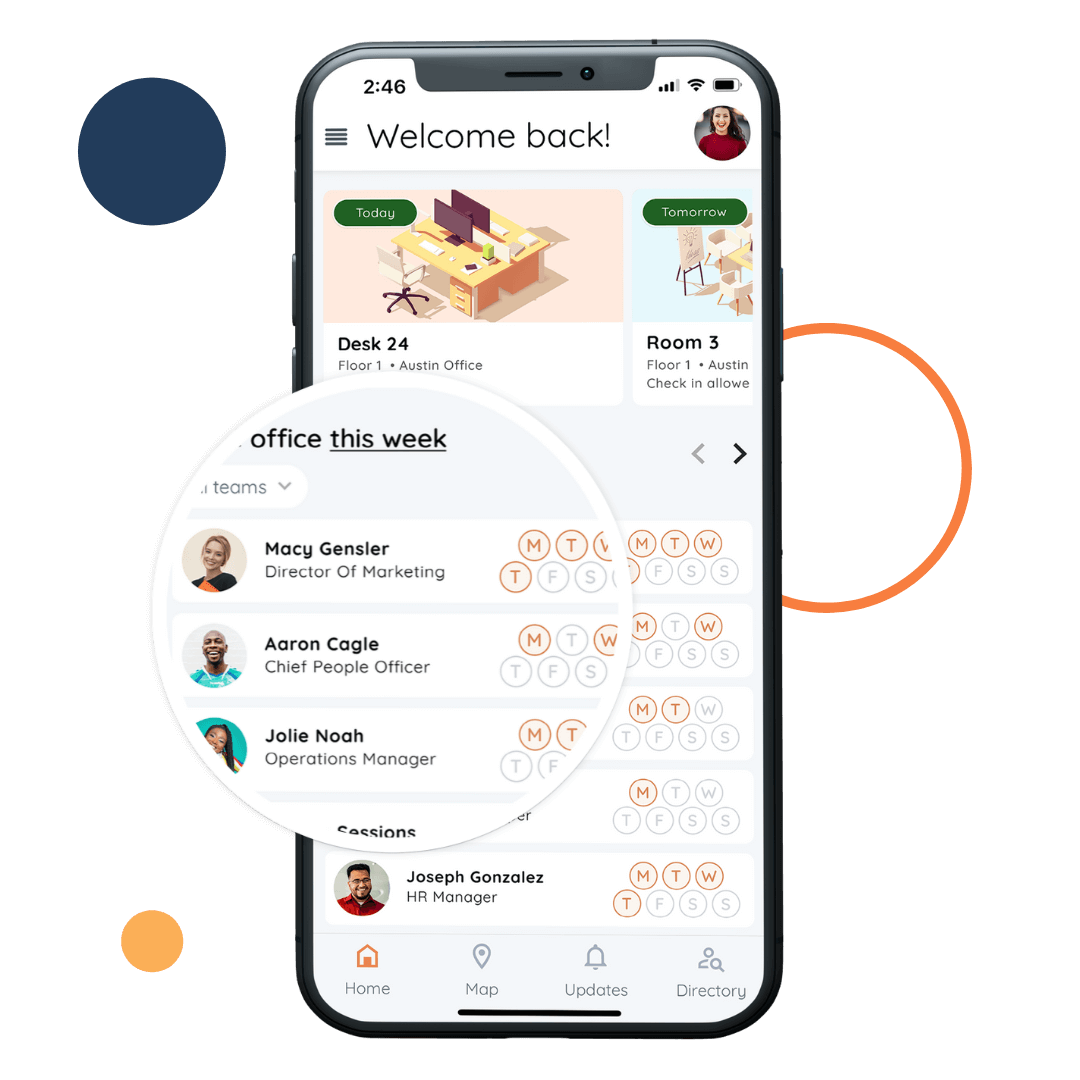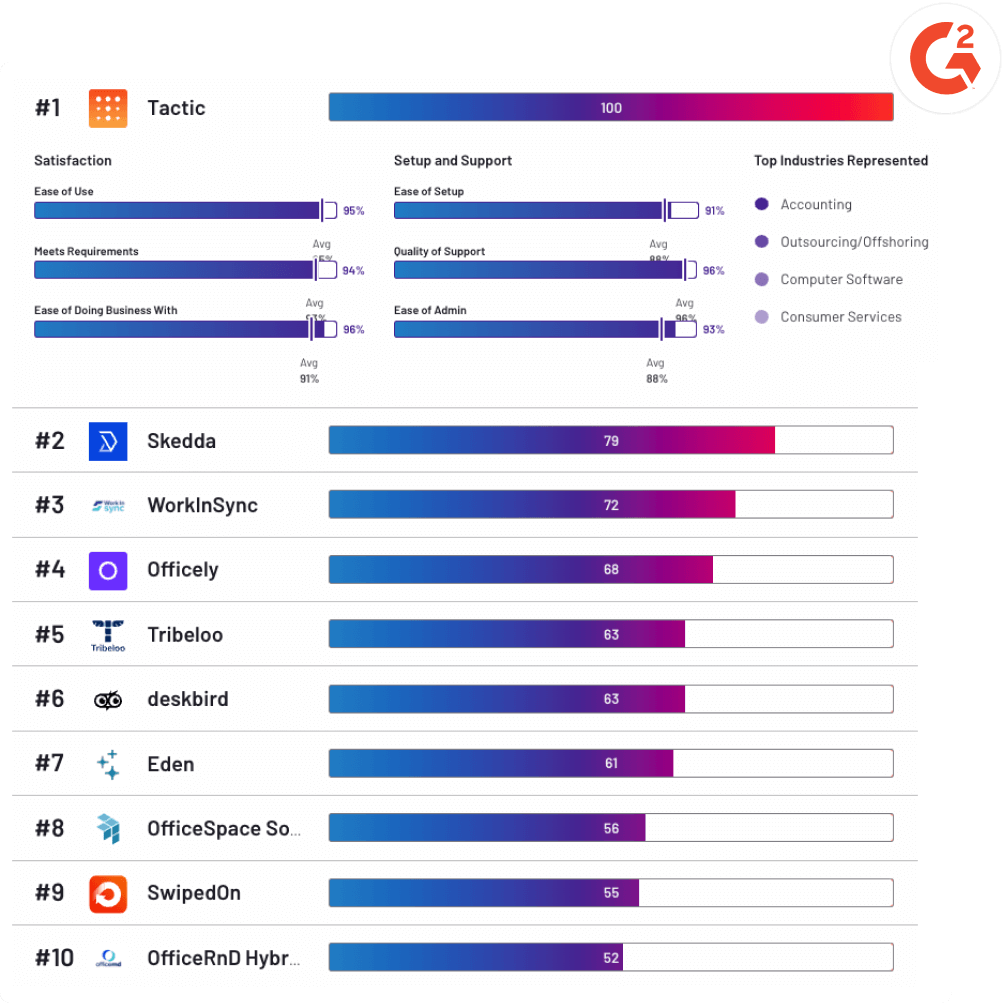In this article, we will delve into the meaning and definition of hybrid work, along with providing you valuable tips and tricks to navigate this work model with ease. Whether you’re an employer looking to implement hybrid work or an employee adapting to this new way of working, we’ve got you covered.
Key Takeaways:
- Hybrid work combines elements of remote work and in-person work, offering flexibility and face-to-face interaction.
- Benefits of hybrid work include increased office attendance, improved productivity, and higher employee retention rates.
- Employers should focus on effective communication, creating a supportive work environment, and establishing clear guidelines.
- Employees can benefit from time management strategies, setting boundaries, and staying connected with colleagues.
- Designing workspaces that support hybrid workers and addressing challenges play crucial roles in successful hybrid work implementation.
Now, let’s dive into the world of hybrid work and discover the endless possibilities it brings for both employers and employees.
What is Hybrid Work?
In today’s fast-paced working environment, the concept of hybrid work has gained significant attention. But what exactly is hybrid work? And how does it differ from remote work or in-person work? Let’s dive into the meaning and essence of hybrid work.
Hybrid work combines the best of both worlds, blending elements of remote work and in-person work. It offers employees the flexibility to choose where they work while also maintaining some level of face-to-face interaction with colleagues.
Hybrid work allows employees to break free from the confines of a traditional office space and enjoy the benefits of remote work, such as eliminating daily commutes and having a more flexible schedule. At the same time, it emphasizes the importance of in-person collaboration and offers opportunities for team bonding.
With hybrid work, employees have the freedom to work remotely when it suits their needs, whether it’s to focus on deep work without distractions or to address personal commitments. They can then come together with their colleagues at the office for brainstorming sessions, meetings, and fostering a sense of camaraderie.
By adopting a hybrid work model, organizations can tap into a wider pool of talent and increase employee satisfaction. It provides a healthy work-life balance and empowers individuals to accomplish their tasks in a way that suits their work style and preferences.

As the workplace continues to evolve, hybrid work is becoming a prominent choice for both employers and employees. It offers the flexibility and autonomy that employees desire, while still maintaining the valuable aspects of in-person collaboration. To navigate this new work landscape successfully, it is essential to understand the fundamentals of hybrid work and implement strategies that promote productivity and engagement in this hybrid environment.
Benefits of Hybrid Work
Hybrid work, which combines elements of remote work and in-person work, brings numerous benefits to both companies and employees. By embracing this work model, organizations can experience an increase in office attendance, improved employee productivity, and enhanced employee retention rates.
One of the key advantages of hybrid work is the flexibility it offers to employees. It allows individuals to choose where they work, accommodating their unique needs and preferences. This flexibility can lead to higher job satisfaction and increased motivation, as employees have the freedom to create a work environment that suits them best.
Moreover, hybrid work promotes a healthy work-life balance. Employees have the opportunity to reduce lengthy commutes and spend more time with their families or pursuing personal interests. This can lead to decreased stress levels and improved overall well-being, resulting in happier and more engaged employees.
Another benefit of hybrid work is the potential for increased productivity. Research has shown that employees are often more productive when they have the freedom to work in an environment that allows them to focus and minimize distractions. By offering a mix of remote work and in-person work, organizations can empower their employees to work in a way that optimizes their productivity.
Furthermore, hybrid work can contribute to a positive impact on the environment. With fewer employees commuting every day, there is a reduction in carbon emissions, leading to a more sustainable work model. This aligns with the increasing importance placed on corporate social responsibility and can position companies as forward-thinking and environmentally conscious.
Investing in the Right Technology
To fully capitalize on the benefits of hybrid work, organizations should invest in the right technology infrastructure. Providing employees with the necessary tools and resources for seamless collaboration and communication is crucial to maintaining productivity and effectiveness in a hybrid work environment.
Hybrid Work Tips for Employers
Implementing and managing hybrid work arrangements can be a challenging task for employers. However, with the right strategies, you can create a productive and harmonious work environment that benefits both your company and employees. Here are some valuable tips to help you navigate the world of hybrid work:
1. Clearly Communicate Expectations
Effective communication is key to successful hybrid work arrangements. Clearly outline your expectations regarding work hours, availability, and deliverables for both remote and in-person work. Be transparent about the company’s goals and objectives to ensure everyone is on the same page.
2. Foster a Supportive Work Environment
Encourage collaboration and teamwork in both remote and office settings. Create opportunities for employees to connect and socialize, whether through virtual team-building activities, regular video conferences, or in-person meetings. Foster a culture of trust and inclusivity to maintain a sense of belonging among hybrid workers.
3. Establish Clear Guidelines
Establish clear guidelines on how to maintain productivity and communication in a hybrid work model. Define the preferred communication channels, response times, and project management processes. Ensure that employees have access to the necessary tools and technologies they need to perform their tasks efficiently.
4. Embrace Flexibility
One of the main benefits of hybrid work is flexibility. Allow employees to have control over their work schedules and empower them to make decisions that align with their personal and professional responsibilities. By promoting work-life balance, you can enhance employee satisfaction and retention.
“My team is very hybrid! We are so much more productive when we know where everyone is and can plan how to manage our communication as a team.” – Emily A, CEO & Co-founder
5. Provide Training and Support
Offer training programs and resources to help employees succeed in a hybrid work environment. This can include technical skills training, time management workshops, or courses on remote collaboration. Regularly assess employee needs and provide the necessary support to ensure their professional growth and development.
6. Evaluate and Adapt
Regularly evaluate the effectiveness of your hybrid work arrangements and make adjustments as needed. Collect feedback from employees through surveys or focus groups to understand their experiences and identify areas for improvement. Use data to assess productivity, engagement, and overall satisfaction to make informed decisions.
By following these hybrid work tips, employers can create a positive and productive work environment that allows for flexible work arrangements while ensuring the success of their organization.

Key Considerations for Hybrid Work Implementation
| Consideration | Description |
|---|---|
| Clear Communication | Establishing open and transparent communication channels and guidelines. |
| Flexibility | Allowing employees to have control over their work schedules and adaptability. |
| Technology Support | Providing the necessary tools and technologies to enable seamless remote collaboration. |
| Employee Engagement | Creating opportunities for socialization, collaboration, and connection among employees. |
| Continuous Evaluation | Regularly assessing the effectiveness of hybrid work arrangements and making adjustments based on feedback and data. |
Hybrid Work Strategies for Employees
As an employee navigating the world of hybrid work, it’s essential to have effective strategies in place to maximize productivity and maintain a healthy work-life balance. Here are some practical tips and techniques to help you thrive in a hybrid work environment:
1. Manage Your Time
With the flexibility of hybrid work comes the responsibility to manage your time efficiently. Create a schedule that aligns with your most productive hours and allocate specific time blocks for different tasks. Consider using time management apps or techniques like the Pomodoro Technique to stay focused and maintain productivity.
2. Set Clear Boundaries
When working in a hybrid model, it’s important to establish clear boundaries between work and personal life. Create a dedicated workspace and stick to defined work hours to separate business activities from your personal space. Communicate these boundaries with your colleagues to ensure they respect your availability and time off.
3. Foster Communication
Both virtual and in-person communication play vital roles in hybrid work environments. Stay connected with your colleagues through various channels like email, instant messaging tools, video conferences, and regular check-ins. Actively participate in team meetings, offer insights, and collaborate to maintain a strong sense of belonging.
4. Embrace Flexibility
Hybrid work allows for flexibility in choosing where you work, so take advantage of the opportunities it offers. If for a specific task you need a change of scenery, consider working from a local coffee shop or collaborating with team members in a different location. Embracing this flexibility can boost creativity and motivation.
“Hybrid work provides employees the opportunity to craft a work environment that best suits their needs, resulting in increased job satisfaction and improved work-life balance.” – Alexandra Johnson, HR Manager at XYZ Corp
5. Cultivate Relationships
Building and maintaining relationships with colleagues is crucial, whether you work in the office or remotely. Take the initiative to engage in team-building activities, attend social events, and participate in virtual coffee chats. By fostering these connections, you’ll strengthen teamwork, collaboration, and overall job satisfaction.
6. Leverage Technology
In a hybrid work setup, technology plays a significant role in facilitating collaboration and communication. Familiarize yourself with tools like project management software, video conferencing platforms, and cloud-based document sharing. Utilizing these technologies effectively will streamline workflows and enhance productivity.
7. Stay Updated
As hybrid work evolves, stay informed about company policies, changes in work arrangements, and industry trends. Regularly communicate with your manager or HR department to ensure you have the latest information. Staying updated will help you adapt to any shifts and make informed decisions.

| Hybrid Work Strategies for Employees | Benefits |
|---|---|
| Effective time management | Increased productivity and reduced stress |
| Setting clear boundaries | Improved work-life balance |
| Strong communication skills | Enhanced collaboration and teamwork |
| Embracing flexibility | Boosted creativity and motivation |
| Building relationships | Strengthened job satisfaction and engagement |
| Utilizing technology | Streamlined workflows and increased efficiency |
| Staying updated | Adaptability and informed decision-making |
Setting Up a Hybrid Work Schedule
Creating a well-balanced hybrid work schedule is essential for maximizing productivity and flexibility in this new work model. By incorporating different approaches to scheduling workdays at the office and remote workdays, employees can achieve a harmonious blend of in-person collaboration and focused remote work.
Here are some hybrid work tips to help you set up an effective work schedule:
- Assess individual preferences: Start by understanding the preferences and needs of each employee. Some individuals may thrive with more in-person interactions, while others may prefer the quiet focus of remote work. Consider conducting surveys or individual discussions to gather insights.
- Define core collaboration hours: Determine specific hours during which all employees should be available for collaboration. This helps in fostering team synergy and ensuring smooth communication across time zones and locations.
- Implement flexible work hours: Allow employees to have some flexibility in choosing their work hours. This can accommodate personal commitments, enhance work-life balance, and improve overall job satisfaction.
- Establish clear deadlines: Clearly communicate deadlines for project deliverables and ensure that all team members are aware of them. This helps in maintaining accountability and ensures that work progresses smoothly in a hybrid work environment.
- Set realistic goals: Collaboratively define and set realistic goals for both individual and team performance. This allows employees to have clear direction and motivates them to work towards shared objectives.
- Encourage effective time management: Provide resources and guidance on time management techniques to help employees optimize their productivity during both in-office and remote work days.
Remember, a successful hybrid work schedule promotes a balance between collaborative work and individual focus time, taking into account the unique needs and preferences of each employee.
“The key to a successful hybrid work schedule is finding the right blend of in-person collaboration and dedicated quiet time for deep work. By providing flexibility and setting clear goals, employees can thrive in this new work paradigm.”
Implementing these hybrid work tips can ensure that your organization reaps the benefits of this modern work model. Let’s take a closer look at the advantages of hybrid work in the next section.

Communication in a Hybrid Work Environment
Effective communication is essential in a hybrid work environment to foster collaboration, maintain strong team connections, and ensure everyone is on the same page. Implementing efficient communication strategies can help minimize miscommunication, enhance productivity, and promote a positive work culture. Here are some valuable tips for optimizing communication in a hybrid work setting:
- Utilize collaboration tools: Make use of various communication and collaboration tools, such as project management platforms, instant messaging apps, and video conferencing software. These tools enable seamless information sharing, document collaboration, and real-time discussions, bridging the gap between remote and in-person team members.
- Schedule regular check-ins: Establish a routine of regular check-ins with team members to provide updates, address concerns, and ensure everyone is aligned. This can be done through virtual meetings, weekly status updates, or even informal coffee chats. Regular check-ins foster open communication and create a sense of connection.
- Maintain strong team connections: Encourage team members to engage in virtual team-building activities, brainstorming sessions, or even casual conversations to maintain strong relationships. Creating opportunities for both remote and in-person employees to interact fosters a sense of camaraderie and helps build trust and collaboration across the team.
“Communication – the human connection – is the key to personal and career success.” – Paul J. Meyer
By prioritizing effective communication and implementing these strategies, organizations can overcome the challenges of a hybrid work environment and strengthen teamwork and collaboration.
Designing Workspaces for Hybrid Work
In a hybrid work model, creating workspaces that cater to both in-person and remote employees is crucial for fostering collaboration, productivity, and employee well-being. By implementing thoughtful design strategies, companies can ensure that their work environments support the unique needs of hybrid workers.
Flexible Office Layouts
One effective strategy for designing workspaces in a hybrid work model is to adopt flexible office layouts. This allows for easy and efficient reconfiguration of the workspace to accommodate different work styles and preferences. Consider incorporating versatile furniture, movable partitions, and modular workstations that can be easily adjusted to meet the needs of individual employees.
Customizable Workstations
Another important aspect of designing workspaces for hybrid work is providing employees with customizable workstations. This enables individuals to personalize their physical work environment, promoting comfort and productivity. Some examples of customizable features include adjustable desks, ergonomic chairs, and storage solutions that can be tailored to fit individual requirements.
Technology Solutions for Collaboration
In a hybrid work environment, seamless collaboration is essential. By integrating technology solutions into the workspace, companies can facilitate effective communication and collaboration between in-person and remote team members. This includes providing video conferencing tools, project management software, and virtual whiteboards that enable real-time collaboration regardless of physical location.
| Benefits of Designing Hybrid Workspaces | Examples |
|---|---|
| Enhanced Collaboration | Integration of video conferencing tools and virtual collaborative spaces. |
| Improved Productivity | Customizable workstations and ergonomic furniture for employee comfort. |
| Increased Employee Satisfaction | Flexible office layouts and personalized workspaces that cater to individual preferences. |
Creating Inspiring Spaces
Designing workspaces that inspire creativity and engagement is essential for hybrid workers. Incorporate elements such as well-lit areas, vibrant colors, and comfortable breakout spaces to foster a positive work environment. Create designated areas for collaboration and social interaction to encourage spontaneous discussions and ideation among team members.
Implementing Wellness Programs
Supporting employee well-being is crucial in any work environment, including hybrid workspaces. Offer wellness programs and amenities that promote physical and mental health, such as fitness centers, meditation rooms, or standing desks. Encourage employees to take breaks and prioritize self-care, fostering a healthy work-life balance.
By designing workspaces that support the needs of hybrid workers, companies can create a harmonious and productive work environment for all employees, regardless of their work location.

Managing Hybrid Work Challenges
While hybrid work offers numerous advantages, it also presents unique challenges that organizations and employees must address to ensure success. By recognizing and tackling these challenges head-on, companies can create a productive and harmonious hybrid work environment. Here, we discuss key strategies for managing common challenges in a hybrid work setting.
1. Collaboration Challenges:
In a hybrid work model, effective collaboration becomes crucial to maintain seamless communication and ensure project success. To promote collaboration:
- Create dedicated communication channels to facilitate real-time discussions and quick decision-making.
- Encourage the use of collaboration tools like project management software, video conferencing platforms, and shared document repositories.
- Establish regular team meetings – both virtual and in-person – to foster collaboration and strengthen working relationships.
2. Project Management:
Managing projects in a hybrid work environment requires careful planning and coordination. To improve project management:
- Utilize project management tools that provide visibility into project progress and task assignments.
- Set clear deadlines, milestones, and deliverables to keep team members aligned and accountable.
- Regularly communicate project updates and changes to ensure everyone is informed and on the same page.
3. Maintaining Company Culture:
Hybrid work can pose challenges to preserving a strong company culture and nurturing employee engagement. To maintain company culture:
- Plan regular team-building activities that allow colleagues to connect and build relationships.
- Encourage open communication and provide opportunities for feedback and suggestions from employees.
- Create opportunities for social interaction, both in-person and virtually, to foster a sense of belonging and camaraderie.
4. Ensuring Work-Life Balance:
Striking a healthy work-life balance is essential for employee well-being and productivity. To support work-life balance:
- Set clear expectations regarding working hours and availability for both remote and in-person work.
- Encourage employees to establish boundaries and take regular breaks to recharge.
- Promote the use of flexible scheduling options that accommodate personal commitments and individual preferences.
5. Technological Infrastructure:
Sufficient technological infrastructure is crucial for seamless hybrid work operations. To optimize the technological environment:
- Ensure that all employees have access to reliable high-speed internet connections.
- Invest in collaborative software and tools that support efficient remote communication and workflow.
- Provide regular training and technical support to employees to enhance their digital literacy and proficiency.
By implementing these strategies, organizations can overcome the challenges associated with hybrid work and create a thriving work environment that maximizes productivity, engagement, and overall success.
Supporting Employee Well-being in a Hybrid Work Model
It is essential for organizations to prioritize the well-being of their employees in a hybrid work model. By creating a supportive environment and offering resources for personal and professional growth, companies can help their employees thrive both at work and in their personal lives.
Promoting Work-Life Balance
One key strategy for supporting employee well-being is to promote work-life balance. Encourage employees to establish clear boundaries between their work and personal lives, and emphasize the importance of taking regular breaks and time off. By fostering a culture that values work-life balance, organizations can help prevent burnout and improve overall job satisfaction.
Supporting Mental Health
Mental health is another crucial aspect of employee well-being. Organizations can support mental health by providing access to mental health resources and offering employee assistance programs. Encourage open conversations about mental health and promote a supportive and inclusive work environment where employees feel comfortable seeking help when needed. Remember, a healthy mind leads to increased productivity and job satisfaction.
Providing Resources for Personal and Professional Growth
In a hybrid work model, it’s important to provide employees with opportunities for personal and professional growth. Offer learning and development programs, both in-person and online, that cater to the needs and interests of your employees. This can include workshops, conferences, online courses, and mentorship programs. By investing in their growth, organizations show employees that their development is valued and contribute to their overall well-being.
Tactic makes hybrid work easy
Tactic is the #1 rated hot desking software–an all-in-one solution for desk booking, room reservations, visitor management, and office insights. Whether you’re looking to streamline workplace operations, or improve employee engagement, we’ll show you how Tactic’s workplace experience platform is helping companies just like yours to deliver:
- 336% increase in office attendance
- 47% increase in employee productivity
- 25% increase in employee retention
You can easily deploy Tactic in an afternoon and start enjoying the fruits of hybrid productivity. Book a demo to learn more today!

Measuring Success in a Hybrid Work Environment
As organizations embrace hybrid work strategies, it becomes essential to assess the effectiveness of these arrangements. By measuring success in a hybrid work environment, employers can gauge the impact on productivity, engagement, and satisfaction levels. Employing data and employee feedback allows companies to make informed decisions, refine their approach, and maximize the benefits of hybrid work.
Collecting Data for Evaluation
To measure success in a hybrid work environment, organizations can gather relevant data points that provide insights into various factors. This may include:
- Quantitative data such as productivity metrics, project completion rates, and customer satisfaction scores
- Qualitative feedback from employees through surveys, focus groups, or one-on-one interviews
- Comparison of pre-hybrid work and post-hybrid work data to identify changes and improvements
Evaluating Productivity
Productivity is a key aspect of measuring success in a hybrid work environment. Companies can analyze productivity levels by examining key performance indicators (KPIs) for individuals or teams. This could involve evaluating goals achieved, meeting deadlines, and the overall quality of work delivered. By comparing data before and after hybrid work implementation, organizations can identify any shifts in productivity and take necessary actions accordingly.
Assessing Employee Engagement and Satisfaction
Employee engagement and satisfaction play a vital role in the success of hybrid work strategies. Organizations can use surveys or feedback platforms to gauge employee sentiments and understand their experiences with hybrid work. This feedback can help identify potential pain points, areas of improvement, and ideas for enhancing the hybrid work model. Additionally, monitoring employee turnover rates and conducting exit interviews can provide valuable insights into the overall satisfaction and engagement levels within the organization.
The Power of Employee Feedback
Employee feedback is a valuable resource that can guide organizations in refining their hybrid work strategies. Regularly seeking input and suggestions from employees fosters a sense of inclusivity and empowers them to contribute to the improvement of their work environment. It is through these feedback loops that organizations can adapt their policies, optimize processes, and create an environment that meets the needs and preferences of their workforce.
It is important to remember that measuring success in a hybrid work environment goes beyond mere numbers. It also entails considering the overall well-being of employees, the effectiveness of communication channels, and the establishment of a positive company culture. By adopting a holistic approach that incorporates various factors, organizations can ensure the sustained success of their hybrid work model.
Conclusion
In conclusion, hybrid work is a flexible work model that combines the best of remote work and in-person work. It offers numerous benefits for both employers and employees, including increased office attendance, improved productivity, and better work-life balance. By understanding the concept of hybrid work and implementing effective strategies, companies can create a successful work environment that meets the needs of their workforce.
For employers, it is essential to communicate expectations clearly, create a supportive work environment, and establish guidelines for remote and in-person work. This will ensure that employees feel valued, motivated, and connected, regardless of their physical location. Additionally, designing workspaces that cater to the needs of hybrid workers, using collaboration tools effectively, and addressing challenges proactively are crucial for creating a seamless hybrid work experience.
Employees, on the other hand, can navigate hybrid work by managing their time effectively, setting boundaries, and staying connected with colleagues through regular communication. Creating a balanced hybrid work schedule that maximizes productivity and flexibility is key. Moreover, prioritizing employee well-being through promoting work-life balance, supporting mental health, and providing resources for personal and professional growth is vital in maintaining a healthy and engaged workforce in a hybrid work model.
In summary, hybrid work is an evolving work model that offers great potential for organizations and their employees. By embracing the advantages of hybrid work and implementing effective strategies, both employers and employees can thrive in this modern way of working. It is crucial to adapt, communicate, and create an inclusive work environment that supports the unique needs of hybrid workers, ultimately leading to increased productivity, employee satisfaction, and business success.
